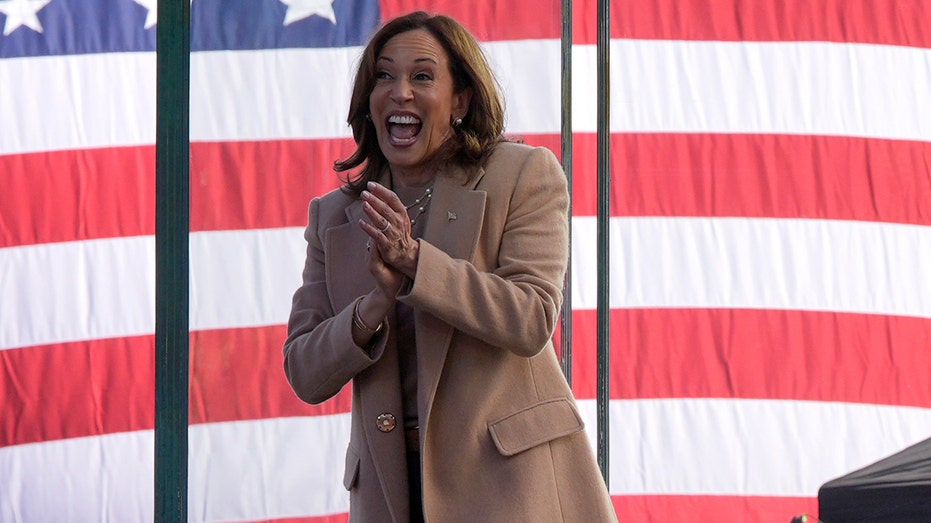
“A shellacking.”
That is how President Barack Obama referred to the results of the midterm elections on November 2, 2010. Two years after winning the White House, Obama and the Democratic Party were soundly trounced, with Republicans regaining control of the House of Representatives (the largest turnover of seats since 1948), snagging a number of Senate seats, adding a half dozen gubernatorial seats, and achieving other assorted victories.
Such a resounding defeat would be humbling for any elected leader, even a president as fundamentally chill and confident as Obama.
But Obama took the loss with sensitivity and sober reflection.
“This is something that I think every president needs to go through,” Obama observed the day after his loss. “[B]ecause the responsibilities of this office are so enormous and so many people are depending on what we do, and in the rush of activity, sometimes we lose track of the ways that we connected with folks that got us here in the first place.”
“[N]ow, I’m not recommending for every future president that they take a shellacking like they — like I did last night,” Obama added with rueful humor. “I’m sure there are easier ways to learn these lessons. But I do think that this is a growth process and an evolution.”
The very American process of learning to accept defeat began during the early days of the Founding Fathers, continued within the tense framework of the Civil War, and moved onward amid the propulsions of the modern era.
For decades, United States voters have shuttled back and forth between the extant two major parties, rewarding them alternatively with victories and punishing them with defeats, carefully crafting a corrective balance of pragmatism, philosophy and harmony that has seen the parties sharing and exchanging power.
For both the Democrats and Republicans, therefore, sustaining long-term strength and clout has not been dependent on maintaining a permanent grip on power, but on a disciplined self-examination after electoral failure. Assessing errors and making changes in policy and presentation, the “growth process,” as Obama put it, has been an essential component of the American experiment.
Obama’s “shellacking,” George W. Bush’s 2006 midterm “thumping,” Richard Nixon’s narrow but decisive 1960 loss to JFK. These have been classic wake-up calls from the U.S. citizenry to chastened leaders.
“[O]ne of the great features of America is that we have political contests,” said Nixon when he conceded in 1960. “[T]hey are very hard fought, as this one was hard fought, and once the decision is made we unite behind the man who is elected.” Nixon, of course, came back to win the presidency in 1968.
Even perennial Republican favorite, Ronald Reagan, crashed in the 1982 midterms. “You ain’t seen nothing yet,” he said after roaring back to victory with his 1984 reelection and cementing his place in history as a party leading light.
Politics ain’t beanbag, and elections have huge consequences, personally for the losers, and nationally for the losing party. A little wound-licking and finger-pointing is to be expected.
But political comebacks for both parties nearly all have been marked by three distinctive elements: an honest appraisal of the party’s shortcomings, from the nominee on down; a respect for the victor, no matter how rancorous the contest; and a solid plan to generate fresh ideas, engage new voters, regain the confidence of the base and the wider electorate, and ensure internal change.
For the Democratic Party in 2024, this elemental process of recovery won’t be so simple.
First off, many Democrats remain in the grips of Trump Derangement Syndrome, which makes introspection and accommodation impossible. A week after the election, President Joe Biden graciously hosted the incoming POTUS for a conversation and a photo-op, but for some in the party, budging an inch on deeply held resentment and recrimination is a nonstarter.
Second, the Democratic Party has spent years in denial, which is a hard habit to break.
Pretending Biden was not suffering a severe loss of acuity, and engaging in a full-throttle effort to conceal, contradict, threaten and gaslight, was not only exhausting, but also implanted a knee-jerk defensiveness and hostility in everyone involved.
Furthermore, refusing to acknowledge that Vice President Kamala Harris was not a strong presidential candidate also has impeded the Democratic Party’s recovery process.
Top aides and party leaders have insisted that Harris was a great candidate who ran a “flawless” campaign, offering her credit for raising (rather than squandering) $1.5 billion in campaign contributions, and encouraging her to contemplate a return to the presidential arena in 2028.
A flawless campaign is not a losing one. Despite a strong opening few weeks in August, the vice president never ventured to outline her vision for a Harris administration, never risked a Sister Souljah moment, and never dared to forge her own path separate from the troubled Biden tenure. “There is not a thing that comes to mind,” she famously told the ladies of “The View” when asked what, “if anything,” she would have done “differently than President Biden during the past four years,” wasting an easy opportunity to define herself on her own terms.
To make matters worse for the Democrats, disgruntled factions have formed and solidified, some blaming Biden (for running again, for running at all, for dropping out, for not dropping out sooner), and just a few privately blaming Harris (for disloyal machinations, for a poor work ethic, for hijacking the nomination, for letting down the party), creating a sour but quiet din that serves no one.
A few Democrats even have doubled down on widely unpopular election issues such as a broad support of transgender rights and open-border policies.
In previous cycles, Democrats in distress have received backup from certain major media outlets such as MSNBC, CNN and the New York Times. But those agencies, damaged by their own cover-ups and complicity, and struggling to retain ratings and authority, are no longer available to provide much help.
The 2024 election revealed the depth of the party’s fractures. Without a coherent and unified theory of the case, it is now difficult for the Democrats to choose a path or foster rising talent. Instead, they are mired in internal resentments and conflict, tossing accusations that their fellows are too woke or too conservative, or wrong on foreign and domestic policy positions, while sticking with a reckless culture of vilification, cancelation and hypocrisy.
The Democrats have a few bright lights. Rising stars such as Rep. Ro Khanna of California and Rep. Ritchie Torres of New York have both been forthright about the realities and lessons of 2024. They have been explicit about how the Democrats have veered off course, yet optimistic and creative about the future of the party.
Torres has been especially critical of the woke fringe of his party. “Donald Trump has no greater friend than the far left, which has managed to alienate historic numbers of Latinos, Blacks, Asians, and Jews from the Democratic Party with absurdities like ‘Defund the Police’ or ‘From the River to the Sea’ or ‘Latinx,’” Torres posted on X. “There is more to lose than there is to gain politically from pandering to a far left that is more representative of Twitter, Twitch, and TikTok than it is of the real world. The working class is not buying the ivory-towered nonsense that the far left is selling.”
Khanna has argued that Democrats have to venture beyond their comfort zones and reach new ears. “I’m confident we’re going to rebuild in 2026 and we’ll win back the White House in 2028,” he stated. “We’ve got to listen.”
There also have been subtler signs that some Dems recognize the need for a more flexible approach. Even the brash and rigid lightning rod Alexandria Ocasio-Cortez (who recently lost a bid for the House Oversight Committee’s leadership position), has been reading the tea leaves.
AOC removed her pronouns from her social media handle, indicating a pull-back from performative signals. Older leaders, such as Reps. Nancy Pelosi and Steny Hoyer, not to mention Joe Biden, will soon make way for younger blood, some of whom will attract attention for good or ill, but will at least offer new stories and different perspectives.
CLICK HERE FOR MORE FOX NEWS OPINION
Indeed, in America, for every party and every citizen, there is always a place for hope.
In 1992, the man from Hope himself, Bill Clinton, decided to challenge the Republican incumbent, President George H. W. Bush, who was serving his first term after eight successful years as Reagan’s vice president.
To be sure, the 1992 campaign was a complex affair. Independent Ross Perot tossed his Stetson into the game, while Bush experienced intra-party backlash and was haunted by his “Read my lips: no new taxes” pledge.
But Clinton, who had a feel for both history and the pulse of the American voter, steered his campaign along a moderate path, embracing the most popular of classic Democratic values while deliberately breaking with the party line on key issues (the death penalty, welfare reform, right-to-work laws, and more). He seized his own Sister Souljah moment — with the original Sister Souljah herself. He made it clear he would be a president for all Americans, not just those who were Democrats or those who agreed with him or those who fell in line. For all his controversies, Clinton painted a winning picture of competence, patriotism, optimism, and unity.
Bill Clinton, of course, is a singular political and policy genius, with a confidence in his own strength, talents and legacy so absolute that he was able to withstand a torrent of scandal, beat an incumbent and an eccentric billionaire, walk through fire, and emerge victorious in the Oval Office for eight wild, dazzling years.
So that, therefore, is history’s lesson for the Democrats: simply find another once-in-a-generation politician, equally gifted as a policymaker and a political candidate, who can talk the owls down from the trees, cherry-pick winning issues, and face down the Trump Empire and the MAGA monolith.
Barring that historical find, the Democratic Party is going to have to comeback the hard way. They can simply wait for the pendulum to swing back. Or those members of the opposition who are brave enough to speak the truth wherever it exists, honest enough to call out the failures of the recent past, and visionary enough to see into the future can begin to do what Kamala Harris calls the hard work.
CLICK HERE TO READ MORE FROM MARK HALPERIN
“A shellacking.”
That is how President Barack Obama referred to the results of the midterm elections on November 2, 2010. Two years after winning the White House, Obama and the Democratic Party were soundly trounced, with Republicans regaining control of the House of Representatives (the largest turnover of seats since 1948), snagging a number of Senate seats, adding a half dozen gubernatorial seats, and achieving other assorted victories.
Such a resounding defeat would be humbling for any elected leader, even a president as fundamentally chill and confident as Obama.
But Obama took the loss with sensitivity and sober reflection.
“This is something that I think every president needs to go through,” Obama observed the day after his loss. “[B]ecause the responsibilities of this office are so enormous and so many people are depending on what we do, and in the rush of activity, sometimes we lose track of the ways that we connected with folks that got us here in the first place.”
“[N]ow, I’m not recommending for every future president that they take a shellacking like they — like I did last night,” Obama added with rueful humor. “I’m sure there are easier ways to learn these lessons. But I do think that this is a growth process and an evolution.”
The very American process of learning to accept defeat began during the early days of the Founding Fathers, continued within the tense framework of the Civil War, and moved onward amid the propulsions of the modern era.
For decades, United States voters have shuttled back and forth between the extant two major parties, rewarding them alternatively with victories and punishing them with defeats, carefully crafting a corrective balance of pragmatism, philosophy and harmony that has seen the parties sharing and exchanging power.
For both the Democrats and Republicans, therefore, sustaining long-term strength and clout has not been dependent on maintaining a permanent grip on power, but on a disciplined self-examination after electoral failure. Assessing errors and making changes in policy and presentation, the “growth process,” as Obama put it, has been an essential component of the American experiment.
Obama’s “shellacking,” George W. Bush’s 2006 midterm “thumping,” Richard Nixon’s narrow but decisive 1960 loss to JFK. These have been classic wake-up calls from the U.S. citizenry to chastened leaders.
“[O]ne of the great features of America is that we have political contests,” said Nixon when he conceded in 1960. “[T]hey are very hard fought, as this one was hard fought, and once the decision is made we unite behind the man who is elected.” Nixon, of course, came back to win the presidency in 1968.
Even perennial Republican favorite, Ronald Reagan, crashed in the 1982 midterms. “You ain’t seen nothing yet,” he said after roaring back to victory with his 1984 reelection and cementing his place in history as a party leading light.
Politics ain’t beanbag, and elections have huge consequences, personally for the losers, and nationally for the losing party. A little wound-licking and finger-pointing is to be expected.
But political comebacks for both parties nearly all have been marked by three distinctive elements: an honest appraisal of the party’s shortcomings, from the nominee on down; a respect for the victor, no matter how rancorous the contest; and a solid plan to generate fresh ideas, engage new voters, regain the confidence of the base and the wider electorate, and ensure internal change.
For the Democratic Party in 2024, this elemental process of recovery won’t be so simple.
First off, many Democrats remain in the grips of Trump Derangement Syndrome, which makes introspection and accommodation impossible. A week after the election, President Joe Biden graciously hosted the incoming POTUS for a conversation and a photo-op, but for some in the party, budging an inch on deeply held resentment and recrimination is a nonstarter.
Second, the Democratic Party has spent years in denial, which is a hard habit to break.
Pretending Biden was not suffering a severe loss of acuity, and engaging in a full-throttle effort to conceal, contradict, threaten and gaslight, was not only exhausting, but also implanted a knee-jerk defensiveness and hostility in everyone involved.
Furthermore, refusing to acknowledge that Vice President Kamala Harris was not a strong presidential candidate also has impeded the Democratic Party’s recovery process.
Top aides and party leaders have insisted that Harris was a great candidate who ran a “flawless” campaign, offering her credit for raising (rather than squandering) $1.5 billion in campaign contributions, and encouraging her to contemplate a return to the presidential arena in 2028.
A flawless campaign is not a losing one. Despite a strong opening few weeks in August, the vice president never ventured to outline her vision for a Harris administration, never risked a Sister Souljah moment, and never dared to forge her own path separate from the troubled Biden tenure. “There is not a thing that comes to mind,” she famously told the ladies of “The View” when asked what, “if anything,” she would have done “differently than President Biden during the past four years,” wasting an easy opportunity to define herself on her own terms.
To make matters worse for the Democrats, disgruntled factions have formed and solidified, some blaming Biden (for running again, for running at all, for dropping out, for not dropping out sooner), and just a few privately blaming Harris (for disloyal machinations, for a poor work ethic, for hijacking the nomination, for letting down the party), creating a sour but quiet din that serves no one.
A few Democrats even have doubled down on widely unpopular election issues such as a broad support of transgender rights and open-border policies.
In previous cycles, Democrats in distress have received backup from certain major media outlets such as MSNBC, CNN and the New York Times. But those agencies, damaged by their own cover-ups and complicity, and struggling to retain ratings and authority, are no longer available to provide much help.
The 2024 election revealed the depth of the party’s fractures. Without a coherent and unified theory of the case, it is now difficult for the Democrats to choose a path or foster rising talent. Instead, they are mired in internal resentments and conflict, tossing accusations that their fellows are too woke or too conservative, or wrong on foreign and domestic policy positions, while sticking with a reckless culture of vilification, cancelation and hypocrisy.
The Democrats have a few bright lights. Rising stars such as Rep. Ro Khanna of California and Rep. Ritchie Torres of New York have both been forthright about the realities and lessons of 2024. They have been explicit about how the Democrats have veered off course, yet optimistic and creative about the future of the party.
Torres has been especially critical of the woke fringe of his party. “Donald Trump has no greater friend than the far left, which has managed to alienate historic numbers of Latinos, Blacks, Asians, and Jews from the Democratic Party with absurdities like ‘Defund the Police’ or ‘From the River to the Sea’ or ‘Latinx,’” Torres posted on X. “There is more to lose than there is to gain politically from pandering to a far left that is more representative of Twitter, Twitch, and TikTok than it is of the real world. The working class is not buying the ivory-towered nonsense that the far left is selling.”
Khanna has argued that Democrats have to venture beyond their comfort zones and reach new ears. “I’m confident we’re going to rebuild in 2026 and we’ll win back the White House in 2028,” he stated. “We’ve got to listen.”
There also have been subtler signs that some Dems recognize the need for a more flexible approach. Even the brash and rigid lightning rod Alexandria Ocasio-Cortez (who recently lost a bid for the House Oversight Committee’s leadership position), has been reading the tea leaves.
AOC removed her pronouns from her social media handle, indicating a pull-back from performative signals. Older leaders, such as Reps. Nancy Pelosi and Steny Hoyer, not to mention Joe Biden, will soon make way for younger blood, some of whom will attract attention for good or ill, but will at least offer new stories and different perspectives.
CLICK HERE FOR MORE FOX NEWS OPINION
Indeed, in America, for every party and every citizen, there is always a place for hope.
In 1992, the man from Hope himself, Bill Clinton, decided to challenge the Republican incumbent, President George H. W. Bush, who was serving his first term after eight successful years as Reagan’s vice president.
To be sure, the 1992 campaign was a complex affair. Independent Ross Perot tossed his Stetson into the game, while Bush experienced intra-party backlash and was haunted by his “Read my lips: no new taxes” pledge.
But Clinton, who had a feel for both history and the pulse of the American voter, steered his campaign along a moderate path, embracing the most popular of classic Democratic values while deliberately breaking with the party line on key issues (the death penalty, welfare reform, right-to-work laws, and more). He seized his own Sister Souljah moment — with the original Sister Souljah herself. He made it clear he would be a president for all Americans, not just those who were Democrats or those who agreed with him or those who fell in line. For all his controversies, Clinton painted a winning picture of competence, patriotism, optimism, and unity.
Bill Clinton, of course, is a singular political and policy genius, with a confidence in his own strength, talents and legacy so absolute that he was able to withstand a torrent of scandal, beat an incumbent and an eccentric billionaire, walk through fire, and emerge victorious in the Oval Office for eight wild, dazzling years.
So that, therefore, is history’s lesson for the Democrats: simply find another once-in-a-generation politician, equally gifted as a policymaker and a political candidate, who can talk the owls down from the trees, cherry-pick winning issues, and face down the Trump Empire and the MAGA monolith.
Barring that historical find, the Democratic Party is going to have to comeback the hard way. They can simply wait for the pendulum to swing back. Or those members of the opposition who are brave enough to speak the truth wherever it exists, honest enough to call out the failures of the recent past, and visionary enough to see into the future can begin to do what Kamala Harris calls the hard work.



